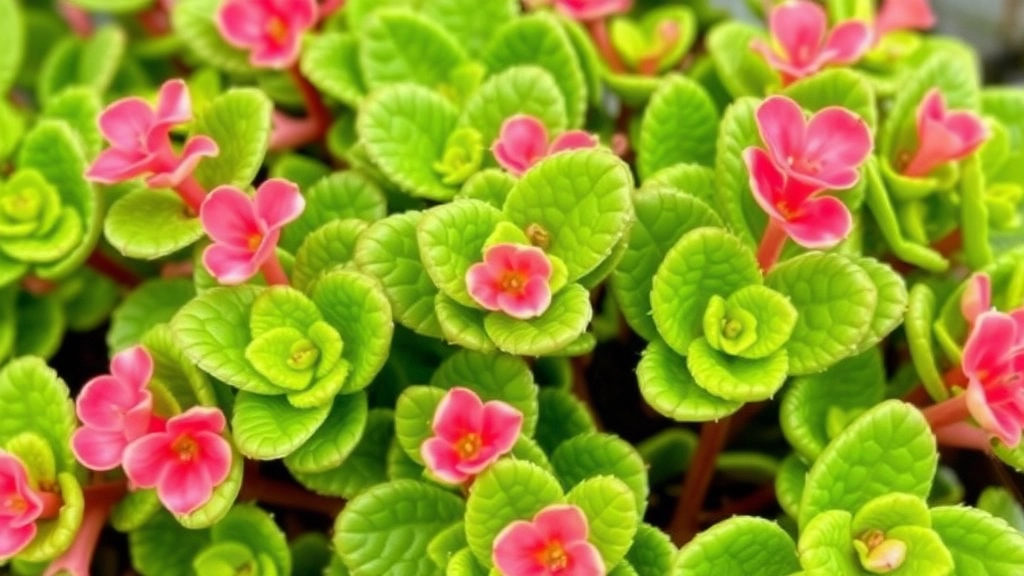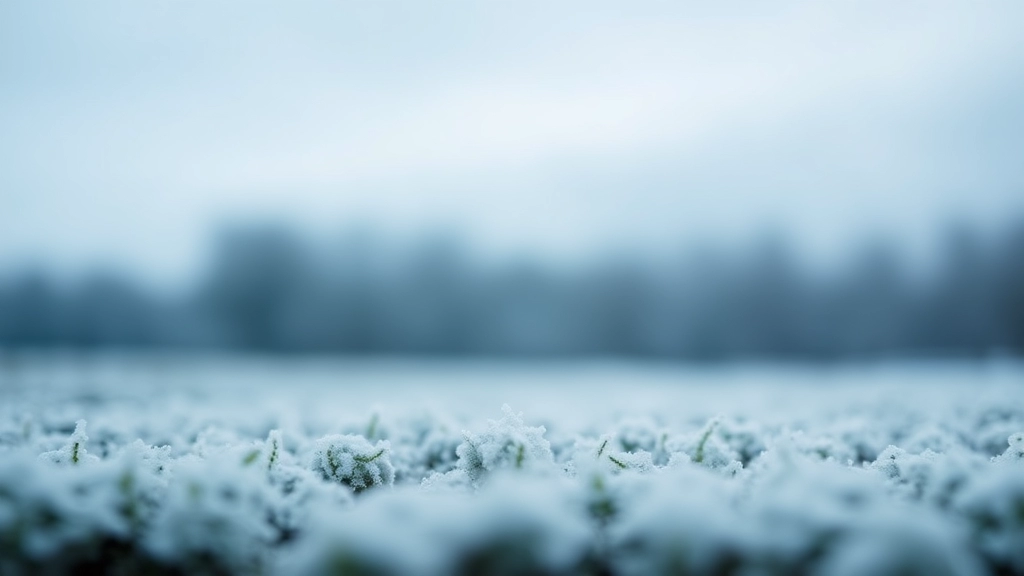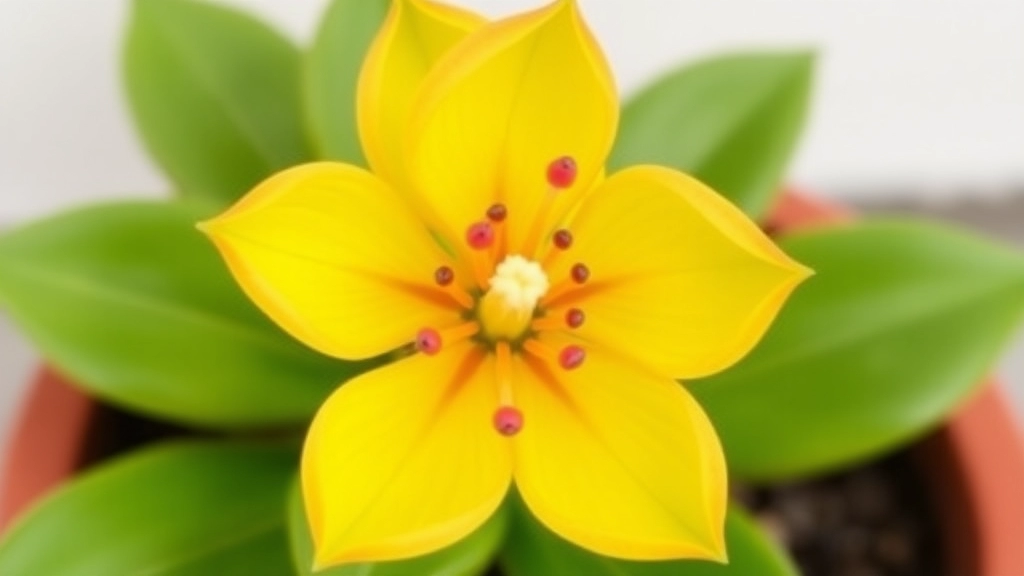Kalanchoe Panamensis Flower: A Unique Succulent for Your Home
Looking to add a touch of green to your home with a unique succulent? The Kalanchoe Panamensis Flower is a fantastic choice. This easy-to-care-for plant not only adds beauty but also requires minimal maintenance. Ideal for both beginners and seasoned gardeners, understanding its basic needs can ensure it thrives in your space.
Care Requirements
To keep your Kalanchoe Panamensis Flower healthy, focus on its light, water, and temperature requirements. This succulent loves bright, indirect sunlight and needs watering only when the soil is completely dry. Avoid overwatering to prevent root rot. Additionally, it prefers a warm environment, so keep it away from drafts and frost.
Enjoying Your Plant
With the right care, you’ll enjoy its vibrant blooms and lush foliage all year round.
To ensure your Kalanchoe Panamensis thrives, consider the following essential requirements:
1. **Soil Type**
– Well-draining soil is crucial.
– A cactus or succulent mix works best.
– You can also create your own mix using potting soil, sand, and perlite.
2. **Pot Selection**
– Choose a pot with drainage holes to prevent waterlogging.
– Terracotta pots are ideal as they allow for better airflow.
3. **Location**
– Place your plant in a spot that receives indirect sunlight.
– Avoid direct afternoon sun, which can scorch the leaves.
4. **Watering Practices**
– Allow the soil to dry out between waterings.
– Water thoroughly, then let excess water drain away.
5. **Fertilization**
– Use a balanced, diluted fertilizer during the growing season.
– Fertilize every 4-6 weeks to encourage healthy growth.
For more detailed information on caring for similar succulents, you might find our [complete guide to growing and caring for Kalanchoe Pink Butterflies](https://planthq.org/complete-guide-to-growing-and-caring-for-kalanchoe-pink-butterflies/) helpful. Additionally, if you are interested in the health benefits of Kalanchoe varieties, check out our article on [how to use Kalanchoe Pinnata for health benefits](https://planthq.org/how-to-use-kalanchoe-pinnata-for-health-benefits/).
Watering and Fertilization Needs for Kalanchoe Panamensis

So, you’ve got your Kalanchoe Panamensis and you’re wondering how to keep it thriving, right?
Watering and fertilization are key players in this game.
Watering Tips
- Frequency: Water your Kalanchoe only when the top inch of soil feels dry. This usually means every 2-3 weeks, but it depends on your environment.
- Method: Use the “soak and dry” method. Give it a good soak, then let the excess drain away. Avoid letting it sit in water—nobody likes soggy roots!
- Signs of Overwatering: Yellowing leaves or a mushy stem? Those are red flags that you might be giving your plant too much love in the water department.
Fertilization Needs
- Type of Fertilizer: Use a balanced, water-soluble fertilizer. A 10-10-10 or a succulent-specific mix works wonders.
- Frequency: Feed your Kalanchoe every 4-6 weeks during the growing season (spring and summer). No need to fertilize in the fall and winter when it’s in dormancy.
- Dilution: Always dilute the fertilizer to half-strength. Less is more when it comes to feeding succulents.
Quick Recap
- Water when the soil’s dry.
- Soak, don’t drown.
- Fertilize every month or so during growth.
Ideal Lighting Conditions to Promote Healthy Growth
When it comes to growing Kalanchoe Panamensis, one of the most common concerns is ensuring that the plant receives the right amount of light.
Why is Lighting Important?
Kalanchoe Panamensis thrives in bright, indirect sunlight. Insufficient light can lead to leggy growth and poor flowering, while too much direct sunlight can scorch its leaves.
Temperature Tolerance and Frost Considerations

When it comes to caring for Kalanchoe Panamensis, understanding its temperature tolerance is crucial. Many plant enthusiasts often worry about how cold their succulents can handle, especially during winter months.
Optimal Temperature Range
Kalanchoe Panamensis thrives in a warm environment. Here are some key points to consider:
- Ideal Temperature: 20°C to 30°C (68°F to 86°F) during the growing season.
- Minimum Temperature: It can tolerate temperatures as low as 10°C (50°F), but prolonged exposure can lead to stress.
- Maximum Temperature: While it can handle higher temperatures, ensure it doesn’t exceed 35°C (95°F) for extended periods.
Frost Sensitivity
Frost is a significant concern for Kalanchoe Panamensis. Here’s what you should know:
- Frost Damage: If temperatures drop below 0°C (32°F), the plant can suffer severe damage or even die.
- Protection Tips:
- Bring your plant indoors during cold snaps.
- Use frost cloth or blankets if you’re growing it outdoors.
- Consider placing it in a sheltered area away from harsh winds.
Seasonal Changes
As seasons change, so do the needs of your Kalanchoe Panamensis.
- Summer Care: Ensure adequate ventilation to prevent overheating.
- Winter Care: Reduce watering frequency, as the plant goes dormant.
Understanding the Flowering Cycle of Kalanchoe Panamensis
Have you ever wondered why your Kalanchoe Panamensis isn’t blooming as expected? Understanding its flowering cycle is crucial for fostering a vibrant plant.
Kalanchoe Panamensis typically flowers during the late winter to early spring months. This is when the plant receives the right amount of light and warmth, stimulating its blooming process.
Key Factors Influencing Flowering
- Light Exposure: Adequate sunlight is vital. Aim for at least 6 hours of bright, indirect light daily.
- Temperature: The ideal temperature range for blooming is between 20°C to 25°C.
- Watering Schedule: A consistent watering routine, allowing the soil to dry between waterings, encourages healthy growth and flowering.
Flower Characteristics
- Blooms: The flowers are usually small, tubular, and can vary in colour, adding a delightful touch to your garden.
- Duration: Once they bloom, the flowers can last several weeks, providing ongoing visual interest.
Encouraging Blooms
To promote a robust flowering cycle, consider these tips:
- Pruning: Trim off dead leaves and spent flowers to direct energy towards new growth.
- Fertilization: Use a balanced fertiliser during the growing season to boost flower production.
- Stress Conditions: Sometimes, slightly stressing the plant (like reducing water) can encourage flowering, but this should be done cautiously.
By understanding these elements, you can enhance the flowering potential of your Kalanchoe Panamensis, ensuring it thrives and brightens your space. For more detailed care tips, check out our complete guide for thriving Kalanchoe Panamensis. Additionally, if you’re interested in other varieties, our visual guide to Kalanchoe species can be very helpful.
Common Problems: How to Handle Pests and Diseases

So, you’ve got your Kalanchoe Panamensis thriving, but suddenly, you notice some pesky problems creeping in.
What’s going on?
Pests and diseases can be a real headache for succulent lovers. But don’t worry, I’ve got your back! Let’s dive into some common issues and how to tackle them like a pro.
Common Pests
- Mealybugs
- Look for white, cotton-like spots on your plant.
- They suck the sap, weakening your plant.
- Solution: Wipe them off with a cotton swab dipped in alcohol.
- Aphids
- Tiny green or black bugs that cluster on new growth.
- They can distort leaves and stunt growth.
- Solution: Spray with a mixture of water and dish soap.
- Spider Mites
- Tiny, almost invisible, and leave fine webbing.
- They thrive in dry conditions.
- Solution: Increase humidity and spray with insecticidal soap.
Common Diseases
- Root Rot
- Often caused by overwatering.
- Look for yellowing leaves and mushy roots.
- Solution: Let the soil dry out completely before watering again. If rot is severe, you might need to repot.
- Leaf Spot
- Brown or black spots on leaves, often due to fungal infections.
- Solution: Remove affected leaves and ensure good air circulation.
- Powdery Mildew
- White, powdery spots on leaves.
- Thrives in high humidity and poor air circulation.
- Solution: Improve airflow and avoid overhead watering.
Prevention Tips
- Always check for pests when you bring new plants home.
- Keep your plant clean by wiping down leaves regularly.
- Ensure proper watering practices to avoid rot.
Propagation Techniques: Growing from Stem Cuttings
Are you looking to expand your Kalanchoe Panamensis collection without breaking the bank?
Growing this succulent from stem cuttings is a straightforward and rewarding process.
VIII. Maintaining Your Plant: Pruning and General Upkeep
So, you’ve got your Kalanchoe Panamensis thriving, but how do you keep it looking its best?
Pruning and upkeep are key to ensuring your plant stays healthy and vibrant.
Why Prune?
Pruning isn’t just about aesthetics; it promotes growth and prevents overcrowding.
Here’s what you need to know:
- Remove Dead Leaves: Start by snipping off any dead or yellowing leaves. This not only keeps your plant looking fresh but also prevents disease.
- Shape It Up: If your Kalanchoe is getting a bit leggy, don’t hesitate to trim back those long stems. This encourages bushier growth.
- Flower Care: After your plant has flowered, cut back the spent blooms. This helps redirect energy back into the foliage.
General Upkeep Tips
Keeping your Kalanchoe Panamensis in tip-top shape isn’t just about pruning. Here are some simple upkeep tips:
- Dust the Leaves: Wipe down the leaves with a damp cloth to keep them dust-free. This helps with photosynthesis.
- Check for Pests: Regularly inspect your plant for pests like mealybugs or aphids. Catching them early makes a world of difference.
- Rotate Your Plant: Turn your Kalanchoe every few weeks to ensure even growth. Plants naturally lean towards the light, so rotating helps balance it out.
- Repot When Necessary: If your plant outgrows its pot, don’t wait too long to repot. A fresh potting mix gives it the nutrients it craves.
Best Uses of Kalanchoe Panamensis in Succulent Gardens
As we explore the practical applications of Kalanchoe Panamensis, it’s important to consider how this stunning succulent can enhance your garden’s aesthetic and functionality.
Versatile Garden Displays
Kalanchoe Panamensis is not just a visual delight; it serves multiple purposes in succulent gardens. Here’s how you can incorporate it effectively:
- Accent Plant: Use Kalanchoe Panamensis as a focal point in your garden. Its unique foliage and vibrant flowers can draw attention and create a stunning visual contrast with other succulents.
- Container Gardening: This plant thrives in pots, making it ideal for balconies or patios. Pair it with other drought-tolerant plants to create a beautiful arrangement that requires minimal maintenance.
- Rock Gardens: The natural, rugged appearance of Kalanchoe Panamensis complements rock gardens beautifully. It can soften hardscapes while adding texture and colour.
- Ground Cover: In warmer climates, Kalanchoe Panamensis can be used as a ground cover. Its spreading nature helps suppress weeds while adding a lush, green carpet to your garden.
Indoor Decor
Kalanchoe Panamensis isn’t limited to outdoor spaces. Here are some ways to make it shine indoors:
- Table Centerpieces: Place a pot of Kalanchoe Panamensis on your dining table or coffee table for an elegant touch. Its vibrant blooms can brighten up any room.
- Office Plants: This succulent is low-maintenance and can thrive in indoor lighting. It’s perfect for brightening up your workspace while improving air quality.
Seasonal Displays
Kalanchoe Panamensis has a flowering cycle that can enhance your garden’s seasonal appeal.
FAQs on Kalanchoe Panamensis Flower
How often should I water my Kalanchoe Panamensis?
Water your Kalanchoe Panamensis only when the top inch of soil feels dry. This typically means every 2-3 weeks, but it depends on your specific environment.
What is the best method for watering Kalanchoe Panamensis?
Use the “soak and dry” method. Give the plant a good soak, then let the excess water drain away. Avoid letting it sit in water to prevent root rot.
What type of fertilizer should I use for Kalanchoe Panamensis?
Use a balanced, water-soluble fertilizer such as a 10-10-10 mix or a succulent-specific fertilizer. Always dilute the fertilizer to half-strength.
How often should I fertilize my Kalanchoe Panamensis?
Fertilize every 4-6 weeks during the growing season (spring and summer). There is no need to fertilize in the fall and winter when the plant is dormant.
What is the ideal temperature range for Kalanchoe Panamensis?
The ideal temperature range is between 20°C to 30°C (68°F to 86°F) during the growing season. It can tolerate temperatures as low as 10°C (50°F) but avoid prolonged exposure to stress.
How can I protect my Kalanchoe Panamensis from frost?
If temperatures drop below 0°C (32°F), bring your plant indoors, use frost cloth or blankets, and place it in a sheltered area away from harsh winds to prevent frost damage.
What are common pests that affect Kalanchoe Panamensis?
Common pests include mealybugs, aphids, and spider mites. Each pest has specific solutions such as wiping with alcohol, spraying with water and dish soap, or using insecticidal soap.
How can I prevent diseases in my Kalanchoe Panamensis?
To prevent diseases like root rot, leaf spot, and powdery mildew, ensure proper watering practices, good air circulation, and avoid overhead watering. Regularly inspect and clean your plant.
Why is pruning important for Kalanchoe Panamensis?
Pruning promotes growth, prevents overcrowding, and keeps the plant healthy. It involves removing dead leaves, shaping the plant, and cutting back spent blooms to redirect energy to the foliage.
What are some general upkeep tips for Kalanchoe Panamensis?
General upkeep includes dusting the leaves, checking for pests, rotating the plant for even growth, and repotting when necessary to provide fresh nutrients.
References
-
How to Grow and Care for Kalanchoe Indoors
-
Kalanchoe Pests and Diseases: How to Treat Common Issues
-
Kalanchoe Plant Care Guide
